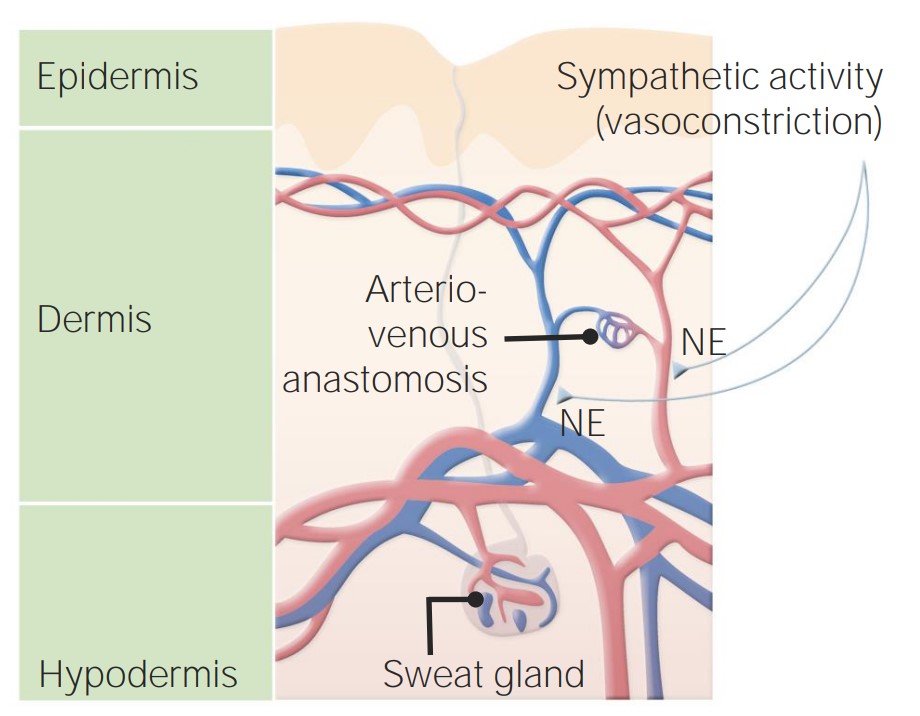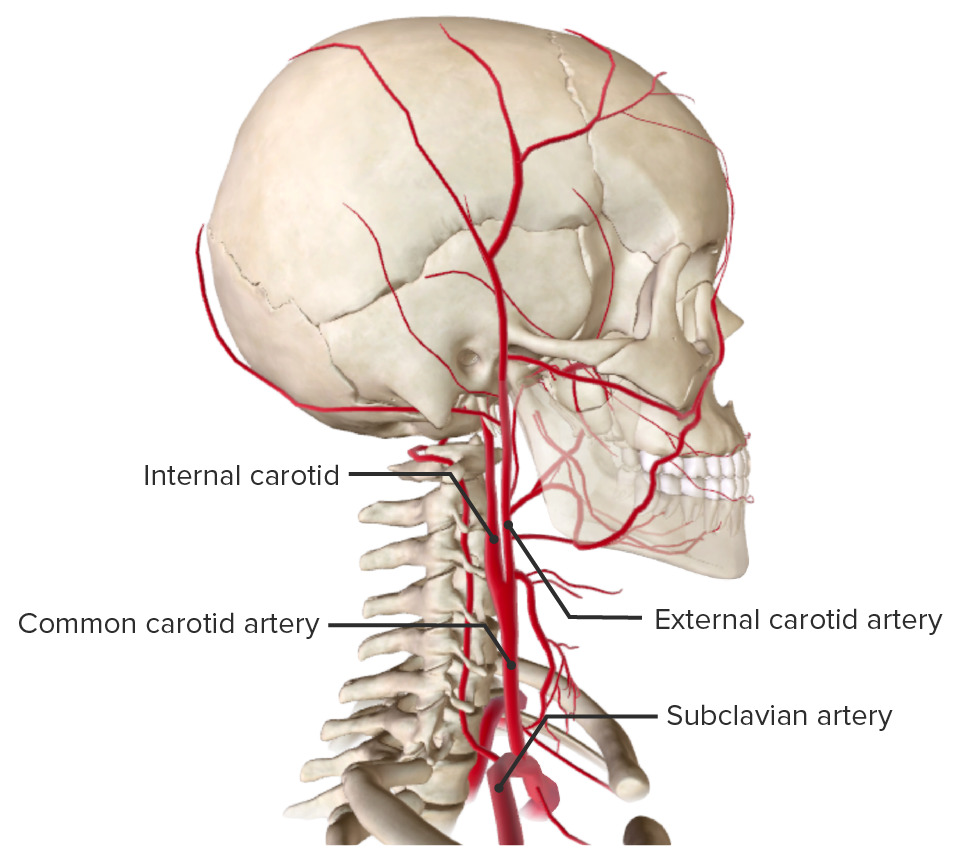Playlist
Show Playlist
Hide Playlist
Cerebral Circulation – Special Circulations
-
Slides SpecialCirculations VascularPhysiology.pdf
-
Download Lecture Overview
00:00 Brain blood flow or the cerebral circulation has a few unique features. Probably the most unique is the blood brain barrier. So there is a barrier between normal blood flow that's traveling around in the systemic circulation and that that reaches the brain. The reason for this brain blood flow barrier is to prevent certain things from crossing over and affecting neurons in the brain. The barrier involves a couple different processes. One of which are tight junctions along the endothelial layer as well as these astrocyte projections. These foot-like projections will be able to decrease the amount of flow across but that brings up another important aspect here and that is you might need to transport a substance across the blood brain barrier because it doesn't have fenestrations and tight junctions prevent its movement. 01:03 This is another picture to show those foot-like projections, how it almost encases a blood vessel and you can imagine that's very difficult to move things from the blood itself in through these different layers, into the brain interstitial fluid and eventually the cerebrospinal fluid. 01:25 This is helpful to prevent certain toxins from making their way in and bacterial infections. 01:33 Other items that are important with the brain is they will increase brain blood flow base upon what activity is going on. To relate those together, it usually has to do with the amount of metabolism. If you're doing something like talking or reading, you are using various portions of your brain and while you're using various portions of your brain, those spots will get more brain blood flow. So sometimes large social interactions will even give you a little bit more brain blood flow than very specific targeted types. Another very important aspect with cerebral circulation is how reactive it is to carbon dioxide. Carbon dioxide causes vasodilation of cerebrovascular bed. It also vasodilates individual vessels themselves. The opposite is also true. In fact, if you blow off a lot of CO2 through hyperventilation you can decrease cerebral blood flow. That is one of the reasons why if a person hyperventilates sometimes they get lightheaded because you have decreased cerebral blood flow. Now besides vasodilation, you also have another ability called autoregulation. Autoregulation is having a near normal blood flow across a wide range of pressures. This is very helpful. So if you look at this graph here where you have mean arterial pressure along the X axis and cerebral blood flow along the Y. You can see about at 60 mmHg to maybe all the way up to 150 mmHg there's a fairly flat plateau. That means that it doesn't matter what the blood pressure is in between 60 and 150 you're going to get the optimal amount of cerebral blood flow. Only if pressure drops below 60 or above 150 will it fall along the normal vasculature where you just get flow depending on perfusion pressure. The handy thing about this or why it's beneficial is that it's almost buffered from the rest of the body. So even if pressure widely fluctuates, you'll be able to obtain optimal amounts of cerebral blood flow. Why? Because the brain is so important, it's controlling all the aspects of the body, you want to make sure its blood flow supply is pristinely controlled and it also has a buffer or protectiveness to it. So you not only protect it with a blood brain barrier, you protect it by making sure it gets the optimal amount of blood flow. That said, it is possible in extreme conditions to overwhelm this autoregulatory system and that can happen in times of syncope or fainting. If blood pressure gets too low, you still won't have enough blood to perfuse the brain.
About the Lecture
The lecture Cerebral Circulation – Special Circulations by Thad Wilson, PhD is from the course Vascular Physiology.
Included Quiz Questions
What effect does an increase in circulating carbon dioxide levels have on cerebral vasculature?
- Increases brain blood flow
- Decreases brain blood flow
- Decreases cerebral autoregulation
- Increases cerebral autoregulation
- No change in blood flow
Which of the following substances can NOT cross the blood-brain barrier?
- Large hydrophilic molecules
- Oxygen
- Carbon dioxide
- Hormones
- Lipid soluble molecules
Which of the following type of cells are a key component of the blood-brain barrier?
- Astrocytes
- Glial cells
- Interneurons
- Microglial cells
- Ependymal cells
Customer reviews
5,0 of 5 stars
| 5 Stars |
|
5 |
| 4 Stars |
|
0 |
| 3 Stars |
|
0 |
| 2 Stars |
|
0 |
| 1 Star |
|
0 |






